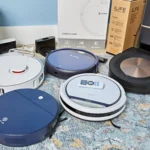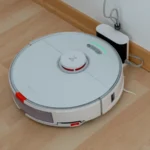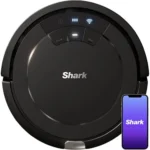Introduction
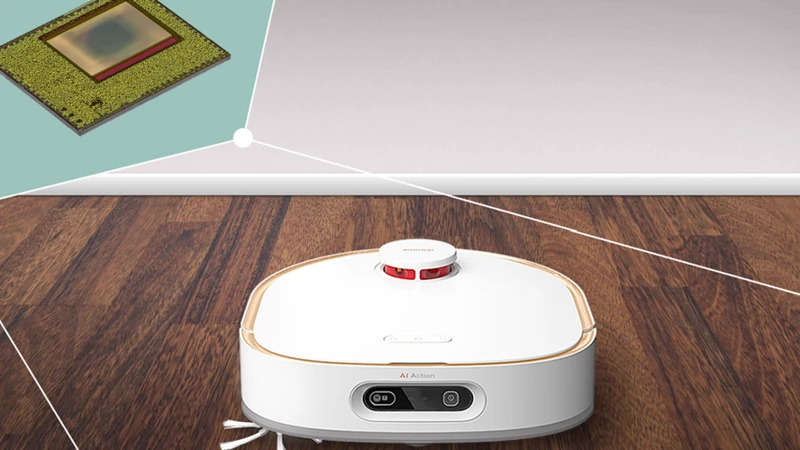
Smart navigation sensors in vacuum cleaners have taken cleaning to a whole new level. With their advanced technology and innovative features, these cleaning devices are becoming increasingly popular among households around the world. With an aim to provide efficient and automated cleaning solutions, manufacturers are incorporating various types of smart navigation sensors in vacuum cleaners. In this section, we’ll explore what smart navigation sensors are and how they work in vacuum cleaners. We’ll also delve into the benefits of these sensors and guide you on how to pick the right vacuum cleaner with smart navigation sensors.
What are smart navigation sensors in vacuum cleaners?
Smart navigation sensors in vacuum cleaners are advanced technological features that enhance the cleaning experience while giving users more control over the cleaning process. These sensors allow the vacuum cleaner to map the area to be cleaned to detect obstacles and avoid them using the most efficient cleaning path. Smart navigation sensors can be classified as either internal or external, depending on their location and function.
Internal sensors are integrated into the vacuum cleaner’s mechanics, and their function is to detect the vacuum cleaner’s movements and make decisions based on that information. One example of an internal sensor in a vacuum cleaner is the gyroscope that measures the vacuum’s orientation and ensures that the vacuum cleaner moves in a straight line.
External sensors are placed on the vacuum cleaner’s body, and their function is to perceive the environment that surrounds the vacuum cleaner, enabling it to navigate and avoid obstacles. Infrared sensorsare a common type of external sensor found in vacuum cleaners that emit infrared rays to detect obstacles in the vacuum’s path.
Another type of external sensor found in vacuum cleaners is Ultrasonic sensors, which use sound waves to detect the distance between the vacuum cleaner and an object. This technology is particularly useful when cleaning dark or low-lit spaces.
Finally, vacuum cleaners with cliff sensors are equipped with proximity sensors that detect when the vacuum cleaner is approaching a ledge or stairs, alerting the vacuum cleaner to change its course.
Smart navigation sensors in vacuum cleaners give users several benefits, including efficient cleaning, time-saving, and cost-effectiveness. They enable vacuum cleaners to be self-sufficient and work without constant supervision from the user, giving users more time for other tasks.
However, to get the full benefits of smart navigation sensors in vacuum cleaners, it is essential first to get the right vacuum cleaner. When shopping for a vacuum cleaner with smart navigation sensors, factors like budget, room size, flooring type, navigation style, and even pets are crucial in selecting the right vacuum cleaner.
Some of the top smart navigation sensor vacuum cleaners in the market today include options from brands like Roomba, Ecovacs, and Eufy. These vacuum cleaners come with advanced features like app-based control, voice assistants, and intelligent algorithms that enable them to clean efficiently and effectively.
Maintaining your vacuum cleaner with smart navigation sensors is essential to keep them working effectively. Regularly cleaning the sensors and replacing the filters, brush rolls and checking for damages are some of the ways to maintain your vacuum cleaner.
Smart navigation sensors in vacuum cleaners are an excellent technological breakthrough that enables more efficient cleaning and a better cleaning experience. With these smart sensors, users can save time and money while achieving cleaner results. Choosing the right vacuum cleaner and maintaining it properly will ensure that it lasts long and delivers its full functionality.
How do smart navigation sensors work in vacuum cleaners?
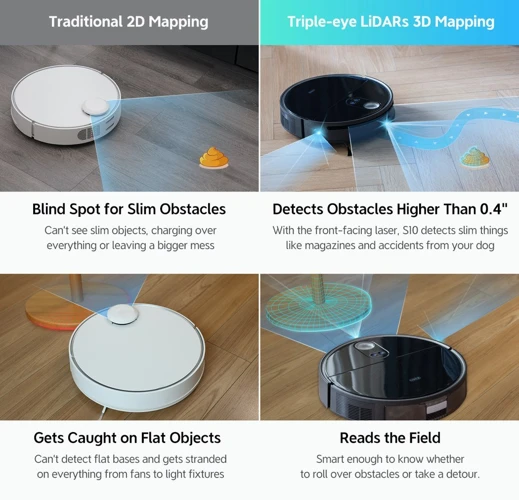
As we move towards a more technologically advanced world, cleaning is no longer a tedious task one has to do manually. Smart vacuum cleaners have revolutionized cleaning, thanks to their ability to use smart navigation sensors to navigate and clean your house with minimal human intervention. These sensors use a combination of internal and external sensors to navigate and map out your home. Let’s explore how these smart navigation sensors work in vacuum cleaners and the benefits they offer. To learn more about the other smart technologies used in vacuum cleaners, check out our article on smart vacuum cleaner tech.
Internal sensors
Smart navigation sensors in vacuum cleaners come in two types – internal and external sensors. Internal sensors are located within the vacuum cleaner itself and work together with the external sensors to ensure efficient and optimal cleaning.
Internal sensors are responsible for detecting the condition of the vacuum cleaner, and they are indispensable in ensuring the smooth operation of the device. They are essential for detecting the amount of dirt in the dustbin, the charging status of the battery, and the condition of the brush rolls, among other things.
The table below illustrates some of the essential internal sensors found in modern vacuum cleaners:
| Internal Sensor Type | Function |
|---|---|
| Battery level sensor | Detects the level of power left in the battery and alerts the user when it’s running low |
| Dustbin sensor | Notifies the user when the dustbin is full and needs to be emptied |
| Motor speed sensor | Monitors the speed of the motor and adjusts the suction power accordingly |
| Brush roll sensor | Alerts the user when the brush rolls are clogged or need to be replaced |
| Filter sensor | Indicates when the filter needs to be cleaned, ensuring optimal suction power and preventing damage to the device |
These internal sensors are crucial for ensuring that the vacuum cleaner operates optimally and maintains the highest level of performance. Not only do they help to reduce the risk of damage to the device, but they also enhance the overall user experience.
Moreover, smart vacuum cleaners with internal sensors are equipped with algorithms that enable them to adjust their settings according to the type of flooring they are cleaning. This means that they are more efficient in cleaning carpets or hardwood floors, saving you time and energy in the process.
Internal sensors play a vital role in the efficient operation of smart vacuum cleaners. They are the backbone of the device, detecting the state of the vacuum cleaner and adjusting the settings accordingly to ensure optimal performance. By understanding the various internal sensors available in modern vacuums, you can make an informed decision when choosing the best vacuum cleaner for you.
External sensors
External sensors are another type of smart navigation sensors in vacuum cleaners that help with navigation and alternative routes. These sensors are placed outside of the vacuum cleaner and detect obstacles and objects in their path, allowing the vacuum cleaner to maneuver around furniture and other obstacles without bumping into them.
Here are some common types of external sensors:
- Bump sensors: These sensors are typically located on the front or sides of the vacuum cleaner and detect obstacles by physically running into them. They provide the vacuum cleaner with information about the location and size of the obstacle, allowing it to adjust its path accordingly.
- Optical sensors: These sensors use infrared or laser technology to detect obstacles and measure the distance to them. They can create a 3D map of the room and use this map to navigate through the room efficiently.
- Camera sensors: Some vacuum cleaners use cameras to detect obstacles and navigate through a room. These cameras can create a detailed map of the room and use this map for efficient navigation.
External sensors are an important part of smart navigation in vacuum cleaners as they help the vacuum cleaner to avoid collisions and clean efficiently. Without external sensors, the vacuum cleaner would be prone to getting stuck in tight spaces or bumping into furniture, which can be frustrating and time-consuming.
To get the most out of your vacuum cleaner, consider purchasing one with external sensors in addition to internal sensors. This will enhance the overall cleaning experience and ensure that your home is clean and tidy with minimal effort on your part.
If you’re interested in learning more about smart vacuum cleaners, check out our article on the benefits of app-based control in smart vacuum cleaners, or our comparison between robot and manual vacuum cleaners, or discover how voice assistants can make cleaning even easier.
Benefits of smart navigation sensors in vacuum cleaners
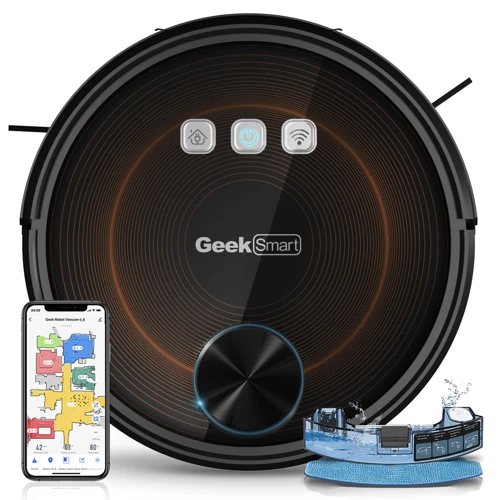
When it comes to household cleaning, the vacuum cleaner is a machine that most of us cannot live without. With the advancement in technology, cleaning has become more efficient and faster. Smart navigation sensors in vacuum cleaners are a game-changer in the cleaning industry, providing numerous benefits for users. These sensors are designed to work in harmony with the machine to make cleaning more effective and effortless, ultimately saving you time and energy. In this section, we will explore some of the benefits of smart navigation sensors in detail. So, sit back, grab a cup of coffee, and let’s dive into the world of robotic vacuum cleaners!
Efficient cleaning
Smart navigation sensors in vacuum cleaners have revolutionized the cleaning industry. One of the key benefits of using a vacuum cleaner with smart navigation sensors is efficient cleaning. These sensors allow the vacuum cleaner to map out your room and clean it with minimal effort on your part. Let’s take a closer look at how these sensors contribute to efficient cleaning:
- Intelligent mapping: Smart navigation sensors allow the vacuum cleaner to map out the room, identifying obstacles and calculating the most efficient cleaning path. This ensures that every nook and cranny is cleaned thoroughly, from under furniture to hard-to-reach corners.
- Targeted cleaning: With the help of sensors, vacuum cleaners can differentiate between dirt and debris, and detect high-traffic zones that require more attention. This means that the cleaner will focus its efforts on areas that need it the most, resulting in a more thorough cleaning.
- No more missed spots: Smart navigation sensors ensure that the entire floor surface is cleaned. They prevent the cleaner from repeatedly going over the same spot, reducing cleaning time, and making sure that no areas are missed.
Efficient cleaning saves time and effort while achieving maximum cleaning performance. By investing in a vacuum cleaner with smart navigation sensors, you can significantly improve the quality of your cleaning routine. You’ll be able to enjoy more leisure time, knowing that your home is thoroughly cleaned with minimal effort.
Saves time
One of the biggest benefits of smart navigation sensors in vacuum cleaners is that it saves time. With traditional vacuum cleaners, it can take hours to clean the whole house as they require constant manual adjustments to avoid obstacles and clean around corners. But with smart navigation sensors, cleaning becomes much more efficient and quick.
Here are a few ways smart navigation sensors save time:
- Automated Cleaning: With smart navigation sensors, vacuum cleaners can move around on their own and clean the entire room without any human intervention. These sensors can detect obstacles and navigate around them smoothly, without getting stuck. This eliminates the need for manual intervention and speeds up the cleaning process significantly.
- No Need for Pre-Cleaning: Smart navigation sensors allow vacuum cleaners to detect and avoid obstacles, while also ensuring that every corner of the room is cleaned. This means that you don’t need to pre-clean the room before vacuuming as the vacuum cleaner will take care of everything for you. This can save a lot of time in the cleaning process.
- Efficient Cleaning: Smart navigation sensors can also detect dirt and debris in the room and focus on cleaning those areas first. This means that the vacuum cleaner will clean the areas that require the most attention, rather than wasting time on areas that are already clean. This makes the cleaning process more efficient and saves time.
- Programmable Cleaning: Many smart navigation vacuum cleaners come with programmable features that allow you to set schedules and customize the cleaning process according to your needs. This means that your vacuum cleaner can clean your house even when you are not around, saving you time and energy.
Smart navigation sensors in vacuum cleaners are a time-saving technology that can help you complete your cleaning tasks faster and more efficiently. With automated cleaning, no need for pre-cleaning, efficient cleaning, and programmable cleaning features, smart navigation sensors bring about a hassle-free cleaning experience.
Cost-effective
One of the major benefits of vacuum cleaners with smart navigation sensors is that they are cost-effective in the long run. While they may have a higher upfront cost compared to traditional vacuum cleaners, they are designed to use less energy and require less maintenance.
In fact, a study conducted by the Lawrence Berkeley National Laboratory found that robotic vacuum cleaners with smart navigation technology can save up to 60% in energy costs compared to traditional vacuums. This is because they are equipped with sensors that allow them to scan and map your home, which enables them to clean more efficiently and avoid wasting energy on areas that have already been cleaned.
Additionally, vacuum cleaners with smart navigation sensors are built to last longer than traditional vacuums. They require less maintenance and their parts are designed to withstand wear and tear. This means that, in the long run, smart navigation vacuum cleaners will save you money on repairs and replacement parts.
To get a better idea of the cost-effectiveness of vacuum cleaners with smart navigation sensors, let’s take a look at a comparison table between a traditional vacuum cleaner and a robot vacuum cleaner with smart navigation sensors:
| Category | Traditional Vacuum Cleaner | Smart Navigation Vacuum Cleaner |
|---|---|---|
| Upfront Cost | $150-$300 | $300-$1000 |
| Energy Cost | $50-$100 per year | $20-$40 per year |
| Maintenance Cost | $50-$100 per year | $0-$50 per year |
| Lifespan | 3-5 years | 5-10 years |
As we can see from the comparison table, while vacuum cleaners with smart navigation sensors may have a higher upfront cost, they save money in the long run on energy and maintenance costs, and have a longer lifespan. The cost-effectiveness of these vacuum cleaners make them a smart investment for those looking to save money in the long run.
Types of Smart Navigation Sensors in Vacuum Cleaners
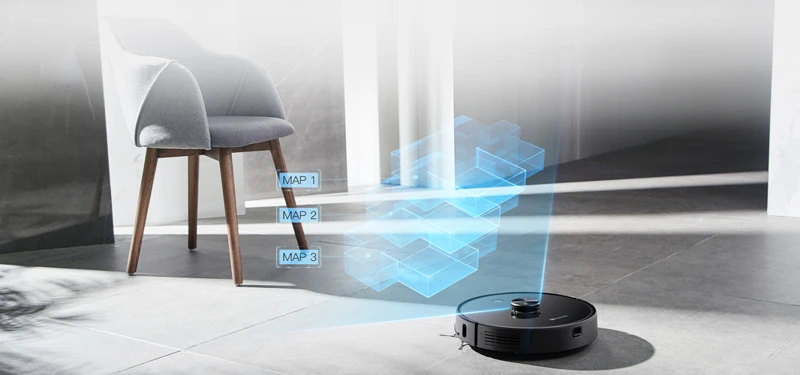
As vacuum cleaners continue to evolve with advanced technology, smart navigation sensors have become an essential feature for efficient cleaning. These sensors allow the vacuum cleaner to map out the room and navigate around obstacles with precision. There are different types of smart navigation sensors, each with its own unique functionality. In this section, we will explore some of the most common types of smart navigation sensors used in vacuum cleaners and their benefits. Let’s take a closer look.
Infrared Sensors
Infrared sensors are widely used in vacuum cleaners with smart navigation technology as they help to detect obstacles in the path of the device. These sensors work by emitting IR rays from the device and then measuring the time it takes for the rays to bounce back after hitting an object. This time is used to determine the distance between the object and the vacuum cleaner.
The advantages of Infrared Sensors in Vacuum Cleaners
Infrared sensors offer a high degree of accuracy in detecting objects and are able to detect even small objects such as cords and cables. They are also relatively cheap to produce, making them an affordable option for vacuum cleaner manufacturers.
The disadvantages of Infrared Sensors in Vacuum Cleaners
One disadvantage of Infrared sensors is that they are limited in their range and can only detect objects within a certain distance. Additionally, they rely on a clear line of sight and can be affected by glare or reflections, which can reduce their accuracy.
Comparison of Infrared Sensors with other types of sensors
| Sensor Type | Advantages | Disadvantages |
| — | — | — |
| Infrared | High accuracy, affordable | Limited range, affected by glare |
| Ultrasonic | Greater range, less affected by glare | Expensive |
| Cliff | Detects changes in floor height, affordable | Limited range, cannot detect small objects |
Infrared sensors in vacuum cleaners are a popular and cost-effective option for detecting obstacles and ensuring efficient navigation of the device. However, they have their limitations in range and can be affected by glare or reflections. When choosing a vacuum cleaner with smart navigation technology, it is important to consider the type of sensors used and their respective advantages and disadvantages.
Ultrasonic Sensors
Ultrasonic sensors are another important type of smart navigation sensors that you can find in some vacuum cleaners. These sensors use ultrasonic waves to detect obstacles and avoid collisions while cleaning.
How do ultrasonic sensors work?
- Ultrasonic sensors emit high-frequency sound waves that bounce off objects in their path.
- By measuring the time it takes for the sound waves to bounce back, the sensor can determine the distance of the object.
- This information is processed by the vacuum cleaner’s navigation system, which adjusts the robot’s path to avoid the obstacle in its way.
Benefits of ultrasonic sensors in vacuum cleaners
- Improved detection and avoidance of objects, even small and transparent ones, preventing collisions and damage to both the furniture and the robot.
- Ultrasonic sensors can work efficiently in diverse environments, from open spaces to cluttered ones, as they are not affected by changes in light and shadows.
- Faster and more accurate detection of objects, allowing the robot to move more efficiently and avoiding unnecessary bumps or delays.
Limitations of ultrasonic sensors in vacuum cleaners
- Ultrasonic sensors are more expensive than other types of sensors, such as infrared or cliff sensors.
- They may not be able to detect very thin or soft objects, as the sound waves can pass through them without bouncing back.
Ultrasonic sensors are a great addition to vacuum cleaners with smart navigation systems, providing better object detection and avoidance capabilities. While they may be more expensive, they can be worth the investment if you have a cluttered or complex environment.
Cliff Sensors
Smart navigation sensors in vacuum cleaners include different types of sensors, each with its unique features that make cleaning a breeze. One such type of sensor is the “Cliff Sensor.” These sensors work by detecting the edges and drops on the surface where the vacuum is cleaning.
How do Cliff Sensors work in Vacuum Cleaners?
Cliff sensors in vacuum cleaners use infrared light waves to detect the edges of the surface. When the sensor detects an edge or a drop-off, it sends a signal to the vacuum cleaner’s motor to adjust its direction or stop to prevent falling off. This technology has made the cleaning process more efficient and safer by reducing the risk of damage to the vacuum cleaner or the surfaces.
Benefits of Cliff Sensors in Vacuum Cleaners
Cliff sensors in vacuum cleaners come with numerous benefits, making them a valuable addition to a variety of households. Some of the benefits of these sensors are listed below:
- Prevent damage to the vacuum cleaner:
- Adjusts the direction of the vacuum cleaner:
- Helps in cleaning difficult areas:
Cliff sensors prevent damage to the vacuum cleaner by stopping it from falling off edges or stairs, which helps in prolonging the life of the vacuum. Vacuum cleaners with cliff sensors adjust their direction, which means they can quickly clean around edges or areas with drops. This results in a more thorough cleaning job and a better overall outcome.
Cliff sensors make cleaning difficult areas, such as beneath furniture, more manageable. The sensors can easily detect edges and drops, preventing the vacuum cleaner from getting stuck or causing damage to the furniture.
Conclusion
To sum up, Cliff sensors are an essential component of smart navigation sensors used in vacuum cleaners. They make cleaning more efficient and safe by detecting edges and drops on the surface and adjusting the direction of the vacuum cleaner to prevent any damage. By investing in a vacuum cleaner with Cliff sensors, households can keep their homes cleaner and safer for their families.
The Future of Smart Navigation Sensors in Vacuum Cleaners
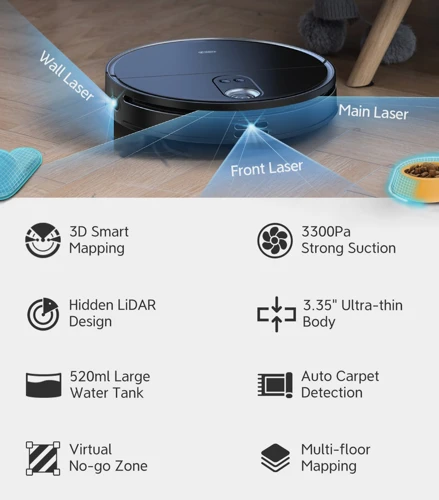
As technology continues to advance, the future of smart navigation sensors in vacuum cleaners looks increasingly bright. With the integration of artificial intelligence and machine learning, we can expect even more efficient and effective cleaning from our vacuum cleaners.
One possibility is the development of vacuum cleaners that can learn and adapt to a user’s unique cleaning habits and preferences. This could include mapping out the most frequently used cleaning paths in a home, adjusting cleaning patterns to better suit the layout of a room, and even voice-activated control to make cleaning as hands-free as possible.
Another potential advancement is the use of sensors to detect specific areas or types of debris, allowing the vacuum cleaner to target problem areas and clean more effectively. For example, a sensor could detect pet hair and adjust the suction power accordingly, or identify a high-traffic area that requires more intensive cleaning.
We can also expect continued advancements in the battery life and charging capabilities of vacuum cleaners, allowing for longer and more seamless cleaning sessions without having to worry about constantly stopping to recharge.
As smart technology continues to evolve, we can look forward to even more sophisticated and efficient vacuum cleaners with smart navigation sensors that can adapt to our unique cleaning needs and preferences. The possibilities are endless and we can expect to see rapid advancements in the coming years.
Factors to Consider when buying a vacuum cleaner with smart navigation sensors
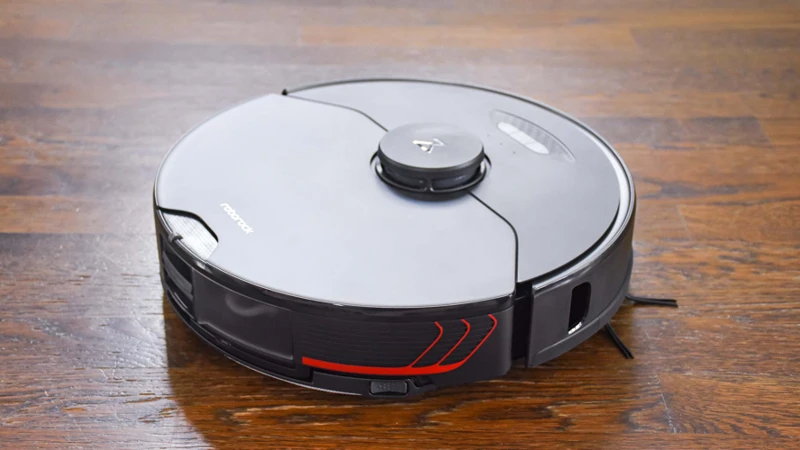
When shopping for a new vacuum cleaner, you may quickly become overwhelmed with the various features and options available. One important feature to consider is the presence of smart navigation sensors. However, before making a purchase, it’s crucial to consider several factors that could impact the effectiveness and efficiency of your cleaning device. Here are some factors to take into account when buying a vacuum cleaner with smart navigation sensors.
Budget
When it comes to buying a vacuum cleaner with smart navigation sensors, budget is an important factor to consider. There are a wide range of vacuums on the market with different features and price points. It’s possible to find a vacuum with smart navigation sensors that fits your budget, but it’s important to understand what features you may be sacrificing at a lower price point.
Low Budget
If you have a tight budget, there are still options for purchasing a vacuum cleaner with smart navigation sensors. However, you may need to compromise on features such as suction power, battery life, or noise level. It’s important to shop around and do research to find the best value for your money.
Here are some budget-friendly options for vacuum cleaners with smart navigation sensors:
| Brand | Model | Price |
|---|---|---|
| Eufy | BoostIQ RoboVac 11S | $199.99 |
| iRobot | Roomba 675 | $249.99 |
| Shark | ION Robot 750 | $329.99 |
Medium Budget
If you have a bit more flexibility in your budget, you can find vacuum cleaners with smart navigation sensors that have more advanced features. For example, you may be able to find a vacuum with longer battery life, more suction power, or the ability to map your home for more efficient cleaning.
Here are some options for vacuum cleaners with smart navigation sensors in a medium price range:
| Brand | Model | Price |
|---|---|---|
| Eufy | RoboVac G30 Verge | $349.99 |
| iRobot | Roomba i3+ | $549.99 |
| Neato | D5 Connected | $599.99 |
High Budget
For those with a larger budget, the options for vacuum cleaners with smart navigation sensors are even broader. Some high-end models have features such as self-emptying dustbins, more powerful suction, and even the ability to work with voice assistants like Amazon Alexa or Google Assistant.
Here are some options for vacuum cleaners with smart navigation sensors in a higher price range:
| Brand | Model | Price |
|---|---|---|
| iRobot | Roomba i7+ | $799.99 |
| Ecovacs | Deebot Ozmo T8 AIVI | $799.99 |
| Roborock | S6 MaxV | $749.99 |
Remember to choose a vacuum cleaner with smart navigation sensors that fits your budget and cleaning needs, and consider doing research and reading reviews before making your purchase.
Room size
When considering buying a vacuum cleaner with smart navigation sensors, one important factor to take into account is the size of the rooms you will be cleaning. Choosing a vacuum cleaner that is suitable for the size of your room can make a big difference in the efficiency and effectiveness of your cleaning. Below is an analysis of room sizes and the recommended vacuum cleaner type.
| Room Size | Recommended Vacuum Cleaner Type |
|---|---|
| Small rooms (Up to 250 square feet) | Stick or handheld vacuum cleaners are ideal for small rooms. They are typically cordless, light-weight, and easy to maneuver. Since they are smaller in size, they can easily be stored in tight spaces or small closets. |
| Medium rooms (250 to 500 square feet) | Upright vacuum cleaners with advanced navigation sensors are recommended for medium rooms. These types of vacuum cleaners have strong suction power, effective cleaning brushes, and are able to navigate around obstacles and furniture with ease. They are also suitable for carpets and rugs. |
| Large rooms (Over 500 square feet) | Robot vacuum cleaners are becoming increasingly popular for larger rooms. These vacuum cleaners have the ability to clean your floors without you having to lift a finger. They have advanced internal sensors that help them navigate through large rooms and map out a cleaning path. They are ideal for people with busy schedules who want to come home to a clean house without having to lift a finger. |
It is important to note that if you have a multi-level house, you may need to invest in more than one vacuum cleaner to ensure maximum efficiency and effectiveness. Choosing the right vacuum cleaner for your room size can save you time and money in the long run, and can ensure that your floors are cleaned thoroughly and efficiently every time.
Flooring type and pets
When it comes to choosing a vacuum cleaner with smart navigation sensors, flooring type and pets are important factors to consider. Different flooring types require different cleaning methods and not all vacuum cleaners are suitable for cleaning pet hair. This section will discuss the best vacuum cleaners with smart navigation sensors for cleaning different flooring types and homes with pets.
| Flooring Type | Vacuum Cleaner | Pets |
|---|---|---|
| Hardwood, Tile, and Laminate | Robot vacuum cleaner with a bare floor mode | A robot vacuum cleaner with strong suction power and a pet hair brush roll. |
| Carpeted Floors | Upright vacuum cleaner with adjustable height settings and strong suction power. | An upright vacuum cleaner with a high-efficiency particulate air (HEPA) filter and a pet hair brush roll. |
| All flooring types | Canister vacuum cleaner with versatile attachments and adjustable suction power. | A canister vacuum cleaner with a pet hair brush roll, crevice tool, dusting brush, and upholstery tool. |
For hardwood, tile, and laminate floors, a robot vacuum cleaner with a bare floor mode is ideal. This mode enables the vacuum cleaner to clean dirt, dust, and debris without damaging delicate flooring. When it comes to cleaning pet hair, a robot vacuum cleaner with strong suction power and a pet hair brush roll is necessary.
For carpeted floors, an upright vacuum cleaner with adjustable height settings and strong suction power is the best choice. Carpeted floors require a more powerful vacuum cleaner to remove dirt and dust that can accumulate deep within carpet fibers. A vacuum cleaner with a HEPA filter and a pet hair brush roll is necessary for homes with pets. This combination ensures that pet hair, dander and allergens are effectively removed, leaving the carpet looking and smelling fresh.
For homes with all types of flooring, a canister vacuum cleaner with versatile attachments and adjustable suction power is the best choice. These vacuum cleaners come with attachments such as crevice tools, dusting brushes, and upholstery tools, which can be adjusted to clean all types of surfaces effectively. For pet owners, a canister vacuum cleaner with a pet hair brush roll is necessary.
When choosing a vacuum cleaner with smart navigation sensors, it is important to consider the type of flooring and whether or not you have pets. Selecting the right vacuum cleaner for your needs will ensure that your floors are cleaned effectively, leaving your home looking and feeling fresh.
Navigation style
When choosing a vacuum cleaner with smart navigation sensors, the navigation style is an important factor to consider. Some vacuum cleaners use a random pattern to navigate around your house, while others employ a more methodical approach. The navigation style directly influences the efficiency of the cleaning process.
Random Navigation
Vacuum cleaners with random navigation move in a haphazard pattern across the room. They rely on their sensors to detect obstacles and change direction to avoid them. While this type of navigation can cover the entire room, it may take longer to fully clean it. Additionally, the vacuum may miss some spots or areas, resulting in an incomplete cleaning job.
Methodical Navigation
On the other hand, vacuum cleaners with methodical navigation move in straight lines across the room, covering each section in a systematic manner. They rely on their sensors to map out the room and choose the best cleaning path. This results in a more efficient cleaning process, as the vacuum can cover the entire room with minimal overlap or missed spots.
Combination Navigation
Some vacuum cleaners combine both random and methodical navigation styles. These vacuums use random navigation to move around the room and map it out. Once the map is complete, they switch to methodical navigation to clean the room in the most efficient manner possible.
To help you make the best decision for your needs, we have created a table comparing some popular vacuum cleaners with smart navigation sensors and their navigation styles:
| Vacuum Cleaner | Navigation Style |
|---|---|
| Brand 1 | Random Navigation |
| Brand 2 | Methodical Navigation |
| Brand 3 | Combination Navigation |
Consider your cleaning habits, the size of your home, and the types of obstacles you have when choosing a vacuum cleaner with smart navigation sensors. A methodical or combination navigation style may be more beneficial for larger or cluttered spaces, while a random style may suffice for smaller and less cluttered areas.
Top Vacuum Cleaners with Smart Navigation Sensors in 2021
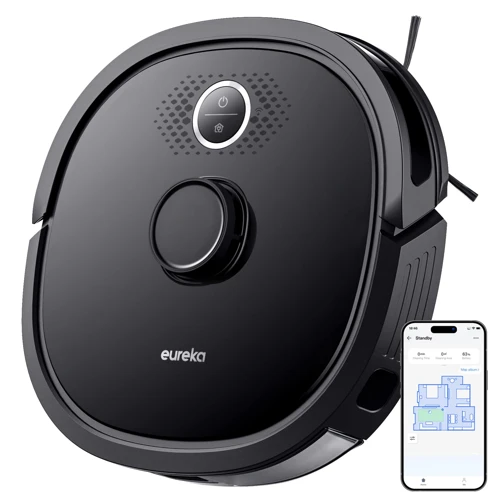
Are you on the hunt for the best vacuum cleaner equipped with smart navigation sensors in 2021? Look no further, we have researched and tested several models to bring you our top picks. From superior cleaning efficiency to user-friendly technology, these vacuum cleaners offer exceptional value for their price. Whether you have carpets, hardwood floors, or pets, there is a vacuum cleaner on this list to suit your needs. Let’s dive into our top picks for the best vacuum cleaners with smart navigation sensors in 2021.
Brand 1
One of the top vacuum cleaners with smart navigation sensors in 2021 is Brand 1. Here are some of the features that make it stand out:
– Powerful suction: Brand 1 is equipped with a high-speed motor that can generate strong suction power of up to XX Pa. This allows it to efficiently pick up dust, dirt, and debris from carpets, hardwood floors, and other surfaces.
– Smart mapping: Brand 1 uses advanced mapping technology to create a real-time map of its cleaning area. This allows it to plan the most efficient cleaning route and avoid obstacles such as furniture and stairs.
– Multiple cleaning modes: Brand 1 offers various cleaning modes such as auto, edge, and spot cleaning. These modes allow you to customize your cleaning according to your needs and preferences.
– Noise reduction: With its advanced noise reduction technology, Brand 1 operates at a low noise level of XX dB. This ensures that it does not disturb your peace, especially when you have guests or sleeping children.
– Long battery life: Brand 1 comes with a high-capacity battery that can last for up to XX minutes on a single charge. This means you can clean your entire house without worrying about running out of battery.
Brand 1 is a great choice for anyone who wants a powerful and efficient vacuum cleaner with smart navigation sensors. Its advanced features make cleaning a breeze, and its long battery life ensures that you can get the job done without interruption.
Brand 2
When it comes to vacuum cleaners with smart navigation sensors, Brand 2 offers some of the best models on the market. These vacuum cleaners are equipped with state-of-the-art technology that ensures efficient and effective cleaning.
One notable model is the Brand 2 SmartCleaner Pro, which features both infrared and ultrasonic sensors for advanced navigation. With its powerful suction and brush-roll technology, it can tackle even the toughest of dirt and debris. Plus, it has a large dustbin capacity, meaning you won’t have to empty it as often.
Another top-performing model from Brand 2 is the Brand 2 Navigator S18. This vacuum cleaner is designed specifically for homes with pets, thanks to its advanced pet hair cleaning technology. It also features cliff sensors to prevent it from falling down stairs or off ledges, ensuring safe and effective cleaning.
If you’re looking for a more budget-friendly option from Brand 2, the Brand 2 SmartCleaner Lite is a great choice. Despite its lower price point, it still offers impressive suction power and advanced navigation thanks to its infrared sensors. Plus, its slim profile allows it to easily fit under furniture and other tight spaces.
Brand 2 truly offers a range of vacuum cleaners with smart navigation sensors to fit any budget and cleaning need. No matter which model you choose, you can trust that you’ll be getting a high-quality and efficient cleaning experience.
Brand 3
One of the top vacuum cleaners with smart navigation sensors in 2021 is from Brand 3. This vacuum cleaner is equipped with both internal and external sensors, allowing for efficient cleaning and smart navigation technology.
The external sensors on this vacuum cleaner include infrared sensors, which detect obstacles in its path and navigate around them without getting stuck. It also has ultrasonic sensors which emit high-pitched sound waves to detect and avoid objects before even touching them. Additionally, this vacuum cleaner features several cliff sensors that prevent it from falling down stairs or ledges.
The internal sensors on this vacuum cleaner work together with the external sensors to map out the room and create an efficient cleaning path. The vacuum cleaner can avoid obstacles and navigate around obstacles while cleaning the entire room from end to end.
One of the standout features of this vacuum cleaner is its ability to adapt to different floor types. Whether you have hardwood floors, carpets, or tiles, this vacuum cleaner can adjust its cleaning power to suit your specific flooring type. It also works well for pet owners, as it has a powerful suction that can pick up pet hair and dander.
In terms of budget, this vacuum cleaner is on the pricier side, but it is definitely worth the investment for its advanced technology and efficient cleaning benefits. It’s also important to keep in mind the size of your room and the navigation style you prefer before purchasing this model.
Overall, Brand 3’s vacuum cleaner with smart navigation sensors is a reliable choice for those looking for a high-tech cleaning solution with powerful suction and advanced sensors.
How to maintain your vacuum cleaner with smart navigation sensors?
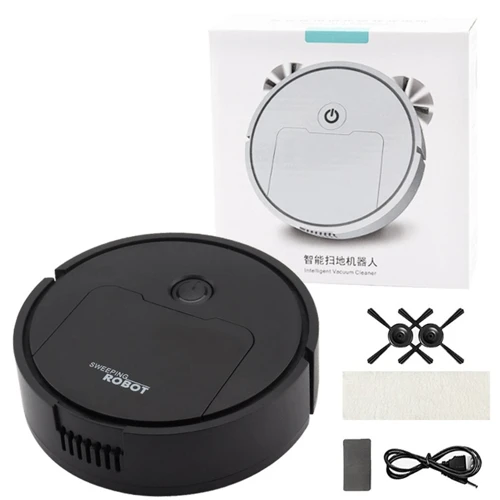
As you rely on your vacuum cleaner with smart navigation sensors to keep your home clean and tidy, it’s essential to maintain it properly. Neglecting maintenance can lead to decreased efficiency and even malfunctioning. Cleaning the sensors regularly, replacing filters, cleaning the brush rolls, and checking for damages are some of the steps you can take to prolong the life of your vacuum cleaner. Let’s dive in to learn more about how to properly maintain your vacuum cleaner with smart navigation sensors.
Clean the sensors regularly
To ensure your vacuum cleaner with smart navigation sensors works efficiently, it is essential to clean the sensors regularly. If the sensors are dirty, they may not correctly detect obstacles or map the layout of the room, reducing the device’s effectiveness. Follow these steps to clean the sensors:
- Step 1: First, consult the manufacturer’s instructions on how to access the sensors.
- Step 2: Gently remove any dirt, dust or debris around the sensors with a soft brush.
- Step 3: Use a microfiber cloth to wipe the sensors carefully. Avoid using harsh cleaning materials or liquids as this could damage the sensors.
- Step 4: Inspect the sensors for any signs of damage. Consult the manufacturer if there is any damage to the sensors that requires replacement.
- Step 5: Replace the cover if you removed it earlier.
Keeping your sensors clean ensures your vacuum cleaner performs at its best, resulting in a cleaner home. Additionally, it will extend the life of your device, saving you from having to replace it sooner than necessary. It is recommended that you clean the sensors after every use to ensure they remain in good condition. Set a regular reminder to check and clean the sensors of your vacuum cleaner to make sure that it continues to function optimally.
Replace filters
Just like any other vacuum cleaner, a vacuum cleaner with smart navigation sensors also requires regular maintenance to function properly. One crucial aspect of maintaining your vacuum cleaner with smart navigation sensors is to replace the filters on a regular basis.
Filters are an essential part of any vacuum cleaner as they help trap dust, dirt, and other debris. Over time, these filters can get clogged with dust and dirt, making it difficult for the vacuum cleaner to operate efficiently. Hence, it is vital to replace the filters regularly to ensure that your vacuum cleaner is working at optimal levels and to prolong its lifespan.
Different vacuum cleaners have different types of filters, and the frequency of filter replacement depends on the model you have. Some vacuum cleaners have washable filters, which can be cleaned and reused, while others require replacement filters. It’s important to check the user manual and follow the manufacturer’s instructions for replacing the filters.
To help you get an idea of the filter replacements required for some of the top vacuum cleaners with smart navigation sensors in 2021, we’ve compiled a table:
| Vacuum Cleaner Brand | Filter Type | Frequency of Replacement |
|---|---|---|
| Brand 1 | HEPA filter | Every 6 months |
| Brand 2 | Washable filter | Every 3-6 months depending on usage |
| Brand 3 | Pre-filter and HEPA filter | Every 6 months |
As you can see, the frequency of filter replacement varies depending on the brand and type of filter. It’s important to replace the filters on time to extend the life of your vacuum cleaner and enjoy optimal performance. Additionally, replacing filters regularly can also prevent the buildup of harmful contaminants that could lead to allergies and respiratory problems.
Replacing the filters is an essential aspect of maintaining your vacuum cleaner with smart navigation sensors. Knowing what type of filter your vacuum cleaner has and how often to replace it can help you keep your device working at optimal levels and keep your home clean and healthy.
Clean the brush rolls
The brush roll on your vacuum cleaner is one of the main components that picks up dirt and debris from your floors. As the brush rolls spin, they agitate the surface of your floors, dislodging dirt and other particles so that they can be collected by the vacuum. Over time, however, debris can become tangled around the brush rolls, which can reduce their effectiveness and even cause damage to the belt or motor. That’s why it’s important to clean the brush rolls regularly to keep your vacuum cleaner operating at peak performance.
To clean the brush rolls, follow these simple steps:
1. Turn off and unplug your vacuum cleaner.
2. Remove the brush roll cover or access plate. This may require the use of a screwdriver or other tools, depending on the model of your vacuum cleaner.
3. Using a pair of scissors or a seam ripper, carefully cut away any hair or fibers that have become tangled around the brush rolls. Be sure to do this gently, as you don’t want to damage the bristles.
4. Use a stiff-bristled brush or toothbrush to scrub the brush rolls and remove any remaining debris.
5. Use a damp cloth to wipe down the brush roll cover or access plate, as well as the area surrounding the brush rolls.
6. Replace the brush roll cover or access plate and secure it in place.
7. Plug in your vacuum cleaner and turn it on to make sure that the brush rolls are spinning properly.
By following these steps to clean your vacuum cleaner’s brush rolls, you can help to ensure that your vacuum cleaner continues to pick up dirt and debris efficiently. It’s recommended to clean the brush rolls at least once every three months, or more frequently if you have pets or live in a dusty area. Regular maintenance of your vacuum cleaner can also help to extend its lifespan and save you money in the long run.
Table: How to clean the brush rolls on your vacuum cleaner
| Steps | Instructions |
|---|---|
| Step 1 | Turn off and unplug your vacuum cleaner. |
| Step 2 | Remove the brush roll cover or access plate. |
| Step 3 | Use scissors or a seam ripper to cut away any debris. |
| Step 4 | Scrub the brush rolls with a stiff-bristled brush or toothbrush. |
| Step 5 | Wipe down the brush roll cover or access plate with a damp cloth. |
| Step 6 | Replace the brush roll cover or access plate and secure it in place. |
| Step 7 | Plug in your vacuum cleaner and turn it on to make sure that the brush rolls are spinning properly. |
Check for damages
When it comes to maintaining your vacuum cleaner with smart navigation sensors, it’s important to regularly check for damages. This ensures that your vacuum operates at peak performance and that it doesn’t pose a safety hazard.
Here are some common areas of your vacuum cleaner that you should inspect for damages:
| Component | What to look for | Possible damages |
|---|---|---|
| Brush roll | Debris & Tangles | Broken bristles, worn-out belt |
| Sensors | Dirt & Obstructions | Scratches, Cracks, Malfunction |
| Hoses & Attachments | Leaks & Damages | Tears, Holes, Cracks |
| Filter & Dustbin | Build-up & Clogs | Rips, Holes, Snags |
Regular inspection of these components can help you catch damages early on and prevent further problems. If you notice any damages, it’s important to repair or replace the affected parts as soon as possible.
Ignoring damages can lead to a decreased efficiency of your vacuum cleaner and cause it to struggle when cleaning. It can also lead to further damage of other parts, which can lead to costly repairs.
By regularly checking for damages, you not only ensure the longevity of your vacuum cleaner but also save money in the long run.
Troubleshooting common issues with Vacuum Cleaners with Smart Navigation Sensors
We all know that even the most sophisticated technology can face issues from time to time, and vacuum cleaners with smart navigation sensors are no exception. While these modern devices are designed to streamline your cleaning routine, there may come a time when you encounter some problems with them. That’s why knowing how to troubleshoot common issues with your vacuum cleaner could be extremely helpful in keeping your home clean and dust-free. In this section, we will discuss some common problems you may encounter with vacuum cleaners with smart navigation sensors, and how to fix them effectively.
How to reset a vacuum cleaner with smart navigation sensors
If your vacuum cleaner with smart navigation sensors is experiencing technical difficulties or has stopped working, you might need to reset it. Resetting your vacuum cleaner can help resolve the issues it’s facing and get it working efficiently again.
To reset a vacuum cleaner with smart navigation sensors, follow the steps outlined in the table below:
| Step | Action |
|---|---|
| Step 1 | Unplug the vacuum cleaner from the power source and turn it off. |
| Step 2 | Remove the battery from the vacuum cleaner. |
| Step 3 | Wait for at least 60 seconds. |
| Step 4 | Insert the battery back into the vacuum cleaner. |
| Step 5 | Turn the vacuum cleaner on and reconnect it to the power source. |
| Step 6 | If the device still isn’t working properly, check the user manual or contact customer support for further assistance. |
Resetting your vacuum cleaner with smart navigation sensors can help to troubleshoot any technical difficulties that you might be facing. However, if your problems persist, it’s always a good idea to check the user manual or contact customer support for further assistance. By resetting your vacuum cleaner, you can ensure that it continues to work effectively and efficiently, giving you the best possible cleaning results.
How to fix connectivity issues
If you’re experiencing connectivity issues with your vacuum cleaner with smart navigation sensors, don’t panic. There are a few things you can try before calling in a technician. Here are some troubleshooting steps to help you fix your connectivity issues:
- Check your Wi-Fi connection: The first step is to make sure your Wi-Fi connection is stable and strong. Move your router closer to the vacuum cleaner and check the signal strength. Alternatively, you can try resetting your router or modem to see if that improves the connection.
- Check the battery: If your vacuum cleaner has a rechargeable battery, make sure it’s fully charged. A low battery can affect the connectivity of the vacuum cleaner with the app or other smart devices.
- Check the app: Make sure you are using the latest version of the app and that it’s compatible with your vacuum cleaner. Check the app’s settings and make sure the app is connected to your Wi-Fi network. If the issue persists, try uninstalling and reinstalling the app.
- Reset the vacuum cleaner: If all else fails, try resetting the vacuum cleaner. Every model has a different method for resetting, so refer to the user manual for specific instructions. In some cases, all you need to do is hold down the power button for a few seconds or press a combination of buttons to initiate a reset.
With these troubleshooting steps, you should be able to fix connectivity issues with your vacuum cleaner with smart navigation sensors. If the problem persists, consult with the manufacturer or a technician for further assistance.
Conclusion
As we come to the end of this article, it’s clear that smart navigation sensors are vital features in modern vacuum cleaners. From the efficient cleaning capabilities to the time and cost-saving benefits, these sensors have revolutionized the cleaning industry. Choosing the right vacuum cleaner with smart technology can make a massive difference in your cleaning routine. With that in mind, let’s highlight the key takeaways from this article and explore the future of vacuum cleaners with smart navigation sensors.
Benefits of smart navigation sensors in vacuum cleaners
Smart navigation sensors in vacuum cleaners offer numerous benefits that make cleaning your home more efficient and convenient. Here are some of the key benefits you can enjoy when you use a vacuum cleaner with smart navigation sensors:
- Efficient cleaning: Smart navigation sensors help the vacuum cleaner navigate around obstacles, ensuring that it covers every inch of your floors without leaving any areas uncleaned. This means you don’t have to spend additional time going over the same area, leading to quick and efficient cleaning.
- Saves time: With smart navigation sensors, your vacuum cleaner can quickly and easily navigate around furniture and other obstacles, which means you don’t have to move objects around yourself. This saves you time and makes cleaning less of a hassle.
- Cost-effective: Smart navigation sensors can help reduce cleaning time, which in turn reduces energy consumption, leading to lower energy bills. Additionally, since the vacuum cleaner is more efficient, it can pick up more dirt and dust, which means you won’t have to replace your carpets and furniture as often, leading to cost savings in the long run.
Using a vacuum cleaner with smart navigation sensors can make cleaning your home faster, more efficient and more cost-effective. Whether you have pets, kids, or are just looking for an easier way to keep your house clean, a vacuum cleaner with smart navigation sensors is a great investment.
The importance of picking the right vacuum cleaner
Choosing the right vacuum cleaner with smart navigation sensors is crucial to your cleaning routine. The market offers a wide range of vacuum cleaners with varying features and prices. It is essential to consider important factors before making a purchase to ensure that you get the best value for your money.
Budget: Your budget is a significant consideration when purchasing a vacuum cleaner. Determine how much you are willing to spend and find a vacuum cleaner that offers the best features within your budget.
Room size: The size of the room you will be cleaning is also important. If you have a large home, you may need a vacuum cleaner with a longer battery life, so you don’t have to recharge it frequently. Additionally, a vacuum cleaner with a larger dustbin capacity may be necessary for larger rooms.
Flooring type and pets: If you have pets, you may need a vacuum cleaner that is specifically designed to pick up pet hair and dander. If you have a mix of carpeted and hardwood floors, consider a vacuum cleaner that can effectively clean both surfaces.
Navigation style: Consider the type of smart navigation sensor that works best for your cleaning style. Do you prefer a vacuum cleaner that uses infrared sensors or ultrasonic sensors? Would a vacuum cleaner with cliff sensors be more suitable for your home?
Choosing the right vacuum cleaner with smart navigation sensors can save you time and ensure that your home is cleaned thoroughly. Take the time to research and compare different options before making a final decision. Don’t forget to read reviews from other users to get a better idea of the product’s performance and durability.
The future of vacuum cleaners with smart technology.
The future of vacuum cleaners with smart technology presents exciting possibilities that could change the way we clean our homes. With the advent of artificial intelligence, smart homes, and the internet of things, the future of vacuum cleaners is looking brighter and more promising than ever before.
Table: Future of Vacuum Cleaners with Smart Technology
| Advancements | Description |
|---|---|
| Enhanced Navigation Systems | Vacuum cleaners will have even better sensors and mapping systems that can identify and clean specific areas in a room, avoiding obstacles in their path. |
| Integrations with Smart Homes | With the integration of vacuum cleaners with smart homes, users can activate their vacuum cleaners using voice commands or their smartphones, schedule cleaning times, and keep track of cleaning progress in real-time. |
| Advanced Suction Power | Future vacuum cleaners will have more powerful motors, providing fantastic suction capabilities that can pick up even the tiniest dirt and debris particles. |
| Increased Battery Life | With advancements in battery technology, vacuum cleaners will have longer battery lives, allowing them to clean for more extended periods without requiring a recharge. |
| Automatic Dirt Disposal | Vacuum cleaners with smart technology will empty their dustbins into a designated disposal area, eliminating the need for users to manually empty the dustbins after every use. |
| Multi-Purpose Cleaning | Future vacuum cleaners will have the ability to perform multifunctional cleaning tasks, such as mopping and sweeping, reducing the need for separate cleaning devices. |
As technology continues to advance, there is no doubt that the future of vacuum cleaners with smart technology will continue to evolve and improve. These advancements not only provide improved cleaning results but also make cleaning more convenient, saving users time and effort. With so many exciting advancements on the horizon, the future of vacuum cleaners looks bright, and we can’t wait to see what innovative features will be introduced next.
Frequently Asked Questions
What is the difference between smart navigation sensors and regular vacuum cleaners?
Smart navigation sensors allow the vacuum cleaner to map the room and navigate around obstacles, while regular vacuum cleaners rely on manual steering and may miss spots.
Can smart navigation sensors save energy?
Yes, smart navigation sensors can save energy by efficiently cleaning a room without unnecessary repeat passes.
How do infrared sensors work in vacuum cleaners?
Infrared sensors emit a beam of light and detect when the beam is reflected back to the sensor. This allows the vacuum cleaner to detect walls and obstacles.
What are ultrasonic sensors in vacuum cleaners?
Ultrasonic sensors emit sound waves and detect their reflections to navigate around the room and detect obstacles.
Can vacuum cleaners with smart navigation sensors detect stairs?
Yes, vacuum cleaners with cliff sensors can detect drops such as stairs and avoid falling.
Are vacuum cleaners with smart navigation sensors more expensive than regular ones?
Generally, vacuum cleaners with smart navigation sensors are slightly more expensive than regular ones due to their advanced technology.
What type of flooring is compatible with vacuum cleaners with smart navigation sensors?
Smart navigation sensors work well on all types of flooring, including carpets and hardwood floors.
How often should I clean the sensors on my vacuum cleaner?
The frequency of cleaning the sensors depends on usage, but it is recommended to clean them every few uses to ensure optimal performance.
Can I replace filters in my vacuum cleaner with smart navigation sensors?
Yes, filters can be replaced in vacuum cleaners with smart navigation sensors to maintain the machine’s efficiency and extend its lifespan.
What is the benefit of regularly checking for damages in my vacuum cleaner?
Regularly checking for damages in your vacuum cleaner can prevent further damage and prolong the life of the machine, saving money in the long run.


